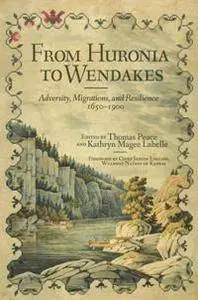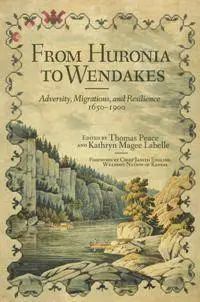From Huronia to Wendakes :
Adversity, Migration, and Resilience, 1650–1900
by Thomas Peace and Kathryn Labelle
English | 2016 | ISBN: 0806155353 | 255 Pages | PDF | 15 MB
Adversity, Migration, and Resilience, 1650–1900
by Thomas Peace and Kathryn Labelle
English | 2016 | ISBN: 0806155353 | 255 Pages | PDF | 15 MB
From the first contact with Europeans to the French and Indian War, the American Revolution, and the War of 1812, the Wendat peoples have been an intrinsic part of North American history. Although the story of these peoples—also known as Wyandot or Wyandotte—has been woven into the narratives of European-Native encounters, colonialism, and conquest, the Wendats’ later experiences remain largely missing from history. From Huronia to Wendakes seeks to fill this gap, countering the common impression that these peoples disappeared after 1650, when they were driven from their homeland Wendake Ehen, also known as Huronia, in modern-day southern Ontario.
This collection of essays brings together lesser-known historical accounts of the Wendats from their mid-seventeenth-century dispersal through their establishment of new homelands, called Wendakes, in Quebec, Michigan, Ontario, Kansas, and Oklahoma. What emerges from these varied perspectives is a complex picture that encapsulates both the cultural resilience and the diversity of these peoples. Together, the essays reveal that while the Wendats, like all people, are ever-changing, their nations have developed adaptive strategies to maintain their predispersal culture in the face of such pressures as Christianity and colonial economies.
Just as the Wendats have linked multiple Wendakes through migrations forced and voluntary, the various perspectives of these emerging scholars are knitted together by the shared purpose of filling in Wendat history beyond the seventeenth century. This approach, along with the authors’ collaboration with modern Wendat communities, has resulted in a rich and coherent narrative that in turn enriches our understanding of North American history.



